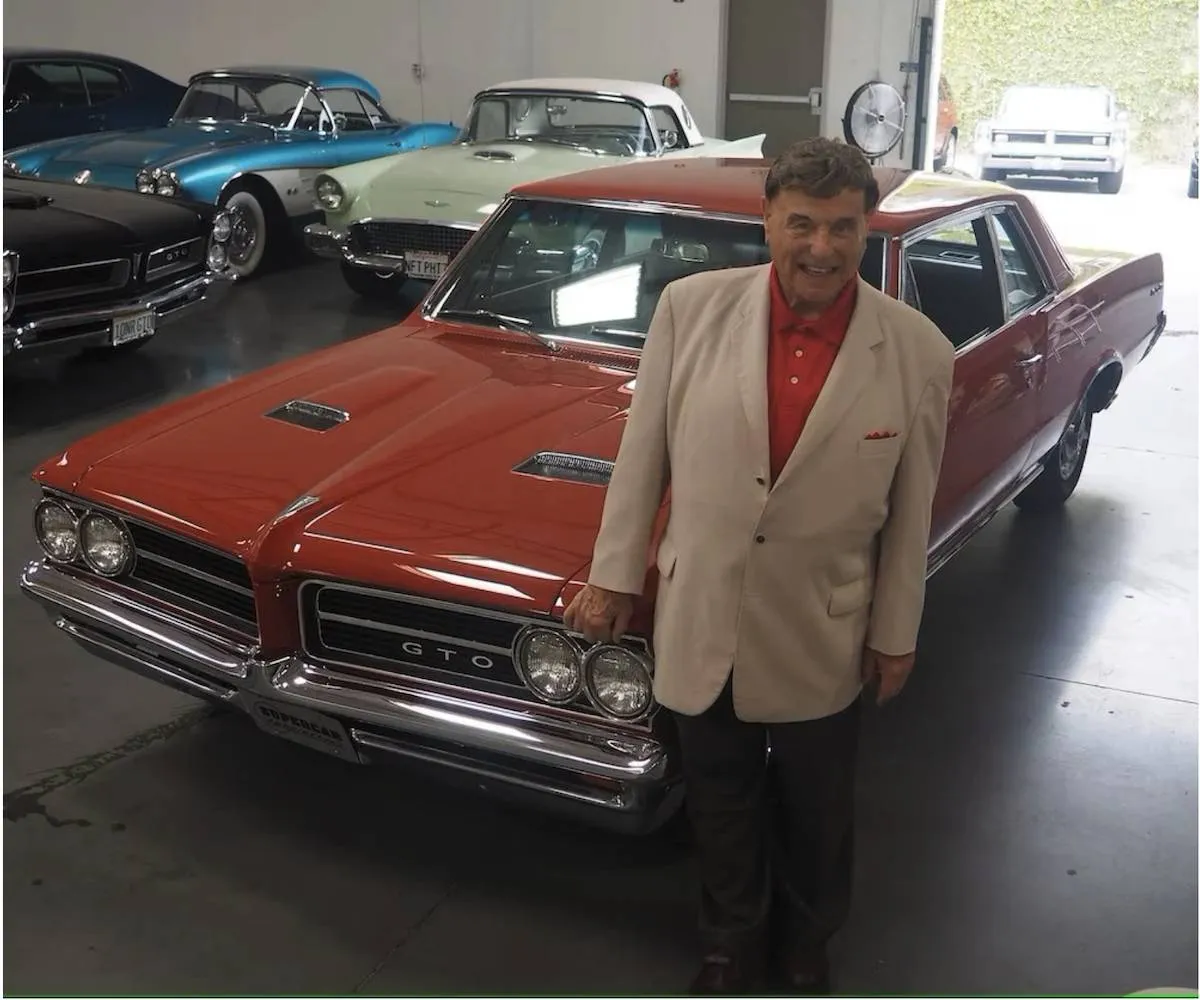Jim Wangers, the ad guy who had John DeLorean’s ear and helped make the 1960s Pontiac’s decade, passed away peacefully early in the morning of April 29, 2023. He was 96 years old.
Wangers auspiciously joined Campbell-Ewald as a copywriter right when the brand was transitioning from an austere member of the “Low-Priced Three” to “The Hot One.” He tried convincing his superiors that NASCAR‘s Speed Week was a fine opportunity to hype the new 180-horse Power Pack for the small-block V8, but Wangers was told that “Chevrolet is not into racing.” He went to Daytona on his own dime and documented the success of the independent Chevy racers, but reaction from superiors continued to be underwhelming, with his bosses feeling Speed Week was some outlaw racing thing, something not unusual in an era where the car scene continued to be seen as full of undesirables.

The all-new 1955 Bel Air wonderfully redefined Chevrolet with huge kudos to Jim Wangers.
With word of Daytona spreading through the media, dealerships were unprepared to cater to enthusiasts inquiring about high-performance Chevrolets. Word eventually got back to Chevrolet’s central office, so Campbell-Ewald was forced to recognize the marketing opportunity and, lo and behold, interest in Wangers’ report received proper consideration.
Chevrolet would never be the same ever again, a juggernaut of style, engineering and performance unmatched in the industry. In fact, thanks to Chevrolet’s success and General Motors owning half the marketplace, GM doubled down on the 1957 Automobile Manufacturers Association racing ban in 1963 and got out of racing so as to keep the Feds at bay with possible monopolistic accusations.

1964 Pontiac GTO brought Pontiac’s efforts from the racetrack to the street, but it was the marketing that changed the rules.
Among all of GM’s brands, Pontiac had developed a reputation as being a unique sporty brand, even more so than Chevrolet. With Tri-Power and Super Duty trademarks, it seemed Pontiac’s investment in racing had all been for naught. “Truth was we were taking Pontiac performance off the race track, like the Corporation wanted, and putting it on the street,” with the GTO, “like the Corporation didn’t want,” wrote Wangers in his book Glory Days. The story has been retold many times, but Wangers enjoyed a unique role as the unofficial spokesman for Pontiac, a man with one hand on the pulse of the Pontiac thanks to his close relationship with Chief Engineer John DeLorean, the other on the pulse of the street — after all, Wangers won the 1960 NHRA Top Stock Eliminator title driving a Royal Pontiac-prepped Catalina, so he knew what was up on Detroit-area strips and local highways like Woodward and Telegraph. (He continued to be a part of the street scene into the 1980s.)
1977 Pontiac Can Am
When DeLorean moved on to Chevrolet, Pontiac’s new people were not warm to Wangers. Actually, there already were many signs out there because the high-performance market was tanking. Wangers took it as a sign and tried his hand running a car dealership in Milwaukee. When that didn’t work out, he went back to Detroit and formed Motortown, a shop that gave lesser cars like the Mustang II, Pontiac LeMans Sport Coupe, AMC Hornet, and Plymouth Volare and Dodge Aspen twins a muscle car image from a previous era and turned them into the Cobra II, Can Am, Hornet AMX, and the Volare Road Runner and Aspen R/T, respectively. Even 1980s cars received the Motortown touch, including the Dodge Charger 2.2. Even when it seemed there was none, Wangers never forgot that horsepower and passion ruled Detroit.

Wangers and Hurst’s Dave Landrith presented AMC with the idea for the SC/Rambler. For 1970, he joined with Hurst to develop the Rebel Machine.
Clearly Jim Wangers was an accomplished man, but his biggest accomplishment was the founding of Automotive Marketing Consultants Inc. (AMCI) in 1981. This company ran certified USAC testing/comparisons for use in marketing — for example, claims like “Best in Class” for a particular metric in an advertisement could be backed up by AMCI documentation.
Nine years ago, he was diagnosed with dementia and possibly Alzheimer’s disease, and five years ago, he moved into an assisted living facility in Orange County, California. Of course, it’s not these moments that define Jim. Of course, his fame comes from being the Godfather of the GTO, but there’s so much more to the man who devoted almost 60 years to the auto industry, car hobby and philanthropy. No matter what your brand allegiance, it’s likely your little enthusiast’s heart owes a debt of gratitude to Jim Wangers.
This article, written by Diego Rosenberg, was originally published on ClassicCars.com, an editorial partner of Motor Authority.
